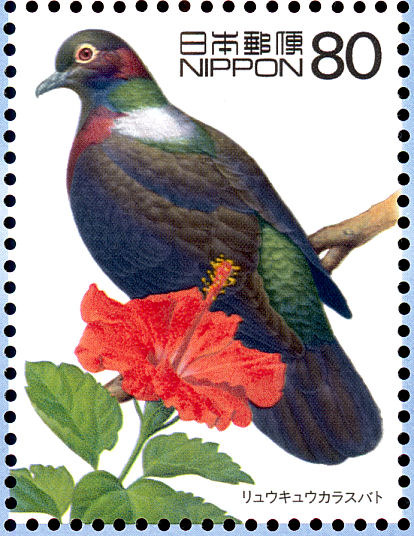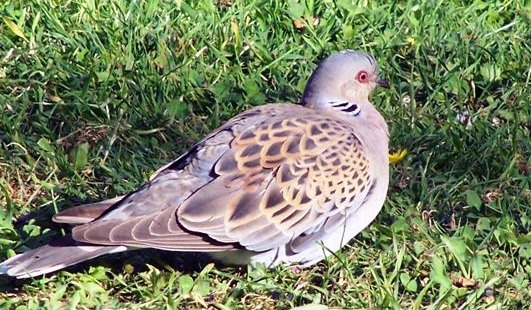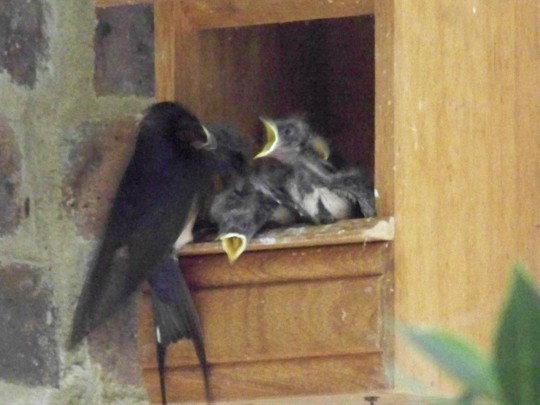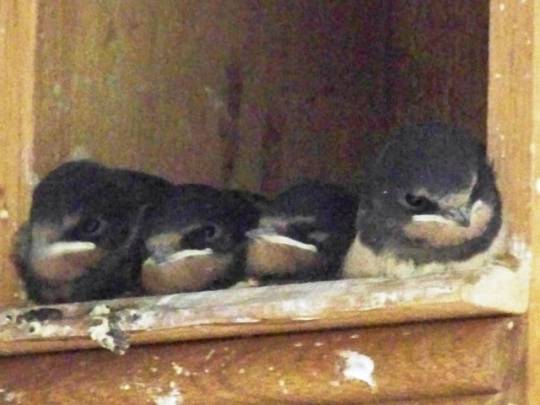#ryukyu wood pigeon
Text


[ID: two images. a photo of the Japanese wood pigeon, dark blue, with iridescent rainbow feathers on it's neck. it perches in a tree, and a stamp, of a ryukyu wood pigeon siting on a branch next to some flowers. it is mostly black/dark green, with red, purple and white on it's neck]
once again smoke fills the room. the air grows chill. the walls start to bleed. a ghost pigeon rises out out the ground and takes its place floating a bit above the ground.
I enter the room holding a mop and bucket of water. "seriously?" I say, "do you know how hard it is to get blood stains out of walls??"
Japanese wood pigeon!! Ryukyu wood pigeon!!! only one can win!!!
#Japanese wood pigeon#Ryukyu wood pigeon#pigeons#polls#columbidae#columbidae contest#tournament poll#and after I just cleaned it from the last guys!#smh it's always those ghosts too! why can't they be like the other pigeons?
14 notes
·
View notes
Text
the signs as animals
arist: south african cheetah
aries: american black bear
argo: kordofan giraffe
arga: griffon vulture
arittanius: wildebeest
arittarius: yak
arpio: bowhead whale
arpia: african elephant
arlo: horse
aro: barn owl
ara: tiger
arza: white rhinoceros
aricorn: spider monkey
ariborn: ring-tailed lemur
arnius: tabby cat
arius: megabat
asci: rock dove
asces: pied crow
armino: lion
armini: eurasian wolf
arcer: gerbil
arcen: newt
arus: bush-tailed porcupine
arun: philippine forest rat
taurrist: asiatic cheetah
taurries: asian black bear
taurgo: nubian giraffe
taurga: cinereous vulture
taurittanius: roan
taurittarius: southern marsupial mole
taurpio: right whale
taurpia: asian elephant
taurlo: sea eagle
tauro: grass owl
taurra: sheep
taurza: sumatran rhinoceros
tauricorn: vervet monkey
tauriborn: aye-aye
taurnius: jungle cat
taurrius: flying fox
taursci: trocaz pigeon
taursces: american crow
taurmino: kit fox
taurmini: tundra wolf
taurcer: guinea pig
taurcen: seal
taurus: crested porcupine
taurun: nile rat
gemrist: north american cougar
gemries: atlas bear
gemgo: west african giraffe
gemga: white-rumped vulture
gemittanius: waterbuck
gemittarius: northern marsupial mole
gempio: blue whale
gempia: blue-ringed octopus
gemlo: snake-eagle
gemo: sooty owl
gemra: argali
gemza: black rhinoceros
gemicorn: proboscis monkey
gemiborn: sifaka
gemnius: european wildcat
gemrius: egyptian fruit bat
gemsci: laurel pigeon
gemsces: cape crow
gemmino: red fox
gemini: arabian wolf
gemcer: dove
gemcen: house mouse
gemus: long-tailed porcupine
gemun: moluccan prehensile-tailed rat
canrist: florida panther
canries: blue bear
cango: reticulated giraffe
canga: black vulture
canittanius: eland
canittarius: golden mole
canpio: bryde’s whale
canpia: dumbo octopus
canlo: black-chested buzzard-eagle
cano: itombwe owl
canra: mouflon
canza: indian rhinoceros
canicorn: pygmy marmoset
caniborn: mouse lemur
canius: black-footed cat
canrius: california leaf-nosed bat
cansci: hill pigeon
cansces: hooded crow
canmino: cape fox
canmini: steppe wolf
cancer: humming bird
cancen: mayor’s moue
canus: bristle-spined rat
canun: bulldog rat
lerist: african leopard
leries: eurasian brown bear
lego: angolan giraffe
lega: turkey vulture
leittanius: gerenuk
leittarius: eurasian beaver
lepio: fin whale
lepia: mimic octopus
lelo: black solitary eagle
leo: bay owl
lera: urial
leza: nile hippopotamus
leicorn: rhesus macaque
leiborn: cockatiel
lenius: sand cat
lerius: hondurian white bat
lesci: snow pigeon
lesces: somali crow
lemino: arctic fox
lemini: mongolian wolf
lecer: flying squirrel
lecen: sikkim mouse
leus: prehensile-tailed porcupine
leun: kerala rat
virrist: javan leopard
virries: eurasian brown bear
virgo: south african giraffe
virga: california condor
virittanius: steenbok
virittarius: north american beaver
virpio: see whale
virpia: blanket octopus
virlo: crested eagle
viro: scops owl
virra: bighorn sheep
virza: east african hippopotamus
viricorn: gibbon
viriborn: parrotlet
virnius: chinese mountain cat
virrius: big brown cat
virsci: specled pigeon
virsces: flores crow
virmino: fennec fox
virmini: dingo
vircer: unstriped ground squirrel
vircen: volcano mouse
virus: electric eel
virun: himilayan field rat
librist: northern goshawk
libries: grizzly bear
libgo: masai giraffe
libga: greater flamingo
libittanius: nyala
libittarius: star-nosed mole
lipio: chilean dolphin
lipia: coconut octopus
liblo: harpy eagle
libo: screech owl
libra: thinhorn sheep
libza: cape hippopotamus
libicorn: bornean orangutan
libiborn: caique
libnius: amazon weasel
librius: dwarf epaulettes fruit bat
libsci: wood pigeon
libsces: bismark crow
limino: grey fox
limini: dog
libcer: indian palm squirrel
libcen: indian field mouse
libus: hog-nosed skunk
libun: sunburned rat
scorrist: gray-bellied hawk
scorries: east siberian brown bear
scorgo: thornicroft’s giraffe
scorga: lesser flamingo
scorittanius: klipspringer
scorittarius: hairy-tailed mole
scorpio: arabian dolphin
scorpia: giant squid
scorlo: papuan eagle
scoro: snowy owl
scorra: snow sheep
scorza: west african hippopotamus
scoricorn: sumatran orangutan
scoriborn: lorikeet
scornius: mountain weasel
scorrius: split-nosed bat
scorsci: comoros olive pigeon
scorsces: white-necked crow
scormino: swift fox
scormini: tibetan wolf
scorcer: eastern grey squirrel
scorcen: ryukyu mouse
scorus: hooded skunk
scorun: aceh rat
sagirist: red-chested goshawk
sagiries: syrian brown bear
sagigo: pig
sagiga: chilean flamingo
sagiittanius: kudu
sagiittarius: eastern mole
sagipio: long-beaked dolphin
sagipia: colossal squid
sagilo: balck eagle
sagio: great horned owl
sagira: red kangaroo
sagiza: angola hippopotamus
sagiicorn: tapanuli orangutan
sagiiborn: parakeet
saginius: steppe polecat
sagirius: brown long-eared bat
sagisci: white-naped pigeon
sagisces: jungle crow
sagimino: plains bison
sagimini: japanese wolf
sagicer: colorado chipmunk
sagicen: cook’s mouse
sagius: striped skunk
sagiun: snake
capririst: besra
capriries: giant panda
caprigo: chicken
capriga: jame’s flamingo
capriittanius: lechwe
capriittarius: gansu mole
capripio: killer whale
capripia: humboldt squid
caprilo: spotted eagle
caprio: eagle owl
caprira: eastern grey kangaroo
capriza: north american ostrich
capriicorn: eastern gorilla
capriiborn: pianos parrot
caprinius: long-tailed weasel
capririus: mediterranean horseshoe bat
caprisci: stork
caprisces: fish crow
caprimino: wood bison
caprimini: indian wolf
capricer: grey-collard chipmun
capricen: cypriot mouse
caprius: spotted skunk
capriun: spider
aquarist: long-tailed hawk
aquaries: sloth bear
aquago: red junglefowl
aquaga: andean flamingo
aquittanius: springbok
aquittarius: long-tailed mole
aquapio: pilot whale
aquapia: japanese flying squid
aqualo: tawny eagle
aquo: fish owl
aquara: western grey kangaroo
aquaza: masai ostrich
aquicorn: western gorilla
aquiborn: cockatoo
aquanius: yellow-bellied weasel
aquarius: raccoon
aquasci: goose
aquasces: house crow
aquamino: european bison
aquamini: arctic wolf
aquacer: gray-footed chipmunk
aquacen: steppe mouse
aqus: fattail scorpion
aqun: alligator
pirist: chanting goshawk
piries: polar bear
pigo: cow
piga: american flamingo
piittanius: sable antelope
piittarius: japanese shrew mole
pipio: houglass dolphin
pipia: vampire squid
pilo: camel
pio: spotted wood owl
pira: antilopine kangaroo
piza: arabian ostrich
piicorn: chimpanzee
piiborn: conure
pinius: european mink
pirius: koalas
pisci: duck
pisces: palm crow
pimino: water buffalo
pimini: baffin island wolf
picer: uinta chipmunk
picen: meerkat
pius: pandinus
piun: crocodile
#homestuck#zodiac#extended zodiac#the signs as#long post#originality is overrated#i spent way way way way too long on this thing
671 notes
·
View notes
Text
Wednesday 23rd December 2020
Our Garden etc. Birds. Part 2 The Comings and Goings
♦ bold type indicates a link to an outside site not affiliated to this blog
Let’s start with our traditional ‘Christmas’ bird. The Robin is a member of the Thrush family and is related to both Blackbird and Nightingale who are all also well known for their singing.

Most Robins live a sedentary lifestyle, staunchly defending their own patch of territory from rivals. In fact, they have apparently been known to fight their own reflection or spar with an adversary to the death.
Many Robins won’t move more than 5km (3.11m) whatever the season. Some leave the UK for warmer climates before Winter arrives. Most of these birds are female, crossing the Channel to as far away as Spain or Portugal. They return to the UK with the warmer weather. No passports or Visas required for their wings - bit of a topical joke there: wildlife only obeys borders when it wants to.
We have numerous resident Robins here because we have such a large extent of suitable habitat surrounding the house and they know a good source of food and water for certain. It’s all very harmonic at the moment, but of course that’s subject to change when there’s more at stake.
Robin Facts:
Only for a short period in late summer while they are moulting and inconspicuous do robins stop singing. Both sexes sing.
As with the Nightingale, the song is usually delivered from a concealed perch within a bush or a tree, exposed perches are infrequent. Autumn and Spring songs are distinctly different. The Autumn song starts after the moult, from late Summer onwards. It is more subdued and melancholy in its tone, while the spring song is powerful, confident and upbeat.
The Spring song can start as early as mid-December, reaching full force in Spring. Its purpose is two-fold: to defend a territory and to attract a mate. Therefore, Spring song is far more powerful in males.
Robins are adapted to life in poor light and are often active in half-light when few other birds are about. They tend to be among the earliest birds to start the dawn chorus and one of the last to stop in the evening.
Street lights and floodlights can trigger singing in the middle of the night, and if roosting Robins are disturbed, they can burst into song even in complete darkness.
RSPB
In mild winters robins can start breeding as early as January although their usual breeding season starts in March.
Every continent has its own species of robins, but only the Japanese and Ryukyu Robins are closely related to the European Robin.
Birdspot

Remember last week’s controversy about the colour of their eggs? If you missed it, THIS is the Blog entry you want. Don’t let the headline title put you off, it’s all in there, scroll down.
One of the most interesting facts about migrating Robins is how faithful they are to their territories. Many maintain both their summer and winter patches despite them being hundreds of kilometres apart.
Of course the same is true in reverse. Resident birds are often joined by migrants from Scandinavia, Europe and Russia who avoid the most severe weather in their own countries. Along with other members of the Thrush family like Redwings, Fieldfares and Blackbirds, they arrive on British shores - usually along the East coast - once their own food supply has been covered by snow and ice.
When other garden birds migrate and return
At least 4,000 species of bird are regular migrants. That's about 40 per cent of the world's total. But some parts of the world have a higher proportion of migrants than others.
RSPB
Between September and March, 10-20 million Chaffinches fly here from Scandinavia and Western Europe. They can be differentiated from our resident Chaffinches by their foraging behaviour: searching for food in large flocks on open farmland. UK Chaffinches favour gardens, woodlands and hedgerows.
The UK also sees an influx of Starlings during Winter. Fleeing the severe cold in Eastern Europe, they seek solace in our abundant food sources and comparatively balmy temperatures. Numbers will trickle in throughout September, but the influx really kicks off during October. According to experts, one UK Starling roost numbered close to one million over-wintering birds!
In our own garden the most unusual bird we’ve seen visiting is a Turtle Dove, just the one and only on two occasions in subsequent years. Red listed as endangered and even on the verge of extinction it was a real thrill to see it and report the sighting to Operation Turtle Dove.
Turtle Doves have very distinctive plumage and beautiful voice quite different from other Pigeons.
The 12 Days of Christmas is a song that promises a great deal, but there’s a line that carollers may have to omit in future. Before a whole house of leaping lords and dancing ladies, the second day is supposed to bring two turtle doves. But dramatic declines in populations across Europe may mean that day two disappoints true loves in Christmases to come.
Only slightly larger than a blackbird, the European turtle dove is the UK’s smallest species of pigeon, as well as its only migrant species. You would be hard pushed to find turtle doves in the UK during December, as they spend the winter in sub-Saharan Africa, returning to Europe to breed in late April. With their return comes their gentle purring song, a long-standing sign of spring.
The Conversation

Turtle Dove in our East Sussex garden - yes they are a real thing (for now)
Formerly a widespread breeding species in Britain, the Turtle Dove population in Britain has declined by over 90% since 1994.* The declines are likely linked to changes in agriculture on their breeding grounds in Europe, as well as hunting pressure in the Mediterranean region and possibly environmental changes in their wintering grounds.
BTO
UK decline 94% since 1995 - source Operation Turtle Dove.
Dangers include the fact that it likes to mainly feed from the seeds of weeds and the tidier our land becomes, the more their diet reduces...no one can say that we don’t do our bit Chez Nature Watch! and very sadly, recreational hunting in some parts of Continental Europe.
European Turtle Dove will no longer legally be killed in France this autumn, after the Conseil d'Etat banned hunting of the Vulnerable-listed species. On Friday [11 September 2020], the highest administrative court in France outlawed the practice for the 2020-21 season.14 Sept 2020 Birdguides.com
I really hope the ban continues and spreads far and wide.
You can read more about bird migration here from the RSPB. It offers loads of information and right at the bottom of that page you can also read more about Turtle Doves.
Of course, nothing for me tops the year we had Swallows take over the open fronted nest box in our porch. Getting photos was tricky as we didn’t want to disturb them - to the extent of taking a circular route to go up and down stairs and using our back door when we could.

I often wonder what happened to our brood. Just look at the BTO Migration Map. It’s an incredibly long and arduous journey, fraught with dangers. Apparently this year numbers here were down due to catastrophic storms off Greece in April or May. There did seem to be a healthy population in our neck of the woods though and I always look forward to seeing the migrants back again.
There was an interesting blog about this Summer’s situation Here from a bird food supplier in Hampshire.

Picture credit the BTO as above link
There were actually five in our brood and they all fledged successfully. The photos are fuzzy but given the low light, stealth and using only a little camera, at least I got a record of their Summer with us. I’ve always been so disappointed they didn’t return.
Most songbirds use a nest for just a single clutch or season, then build a new one – if they survive to breed again. But one study showed that most swallows returned to the same colony, with 44 per cent of pairs reoccupying the same nest. ... A good nest may be reused for 10–15 years by a series of different pairs.

Finally today I can’t finish without a big shout out for the BTO Cuckoo Tracking Project where you can get lots of information and also follow the whereabouts and progress of Cuckoos making their journeys backwards and forwards. Currently there’s information on Carlton II, PJ and Valentine.
Cuckoo Article from Countryfile. It’s brilliant.
I hope the last couple of Blogs have been informative as well as interesting. There’s certainly enough reading material to cover quiet moments over the Christmas break if you want something entirely different. I never pretend to be an expert in anything but do go to reputable sources for the links and enjoy increasing my knowledge as I research what to include.
Notes from the Kitchen:
Last night we had a really delicious fish pie. We used Haddock and Salmon, leeks, peas and carrots, parsley and a savoury white sauce. I had thought about grating cheese on top of the potato and adding some thin slices of tomato, but didn’t get around to it...lazy!
Decoration from the Standen Courtyard Christmas Trees
A Pointsettia flower.
Personal details removed from label, the lady who crafted this is hoping to become a volunteer at the property in the New Year.

December 23rd Advent Door. Not expensive, just Little Deer

The Nature Watch Nativity
MANY CHRISTMAS CAROLS make mention of the three kings, who follow a star and come to pay homage to the baby Jesus in Bethlehem. In the Bible, they are not called kings, and their number is not specified—instead they are “wise men from the East.” At many courts in the east, including ancient Babylon and Persia, learned astrologers often served as priestly advisers, practiced in the art of magic. In the centuries since, the three magi have been interpreted as kings.
Taken from This Page where you can see an absolutely incredibly beautiful and ancient mosaic.

Carol of Choice from King’s College Choir, Cambridge
‘We Three Kings’
youtube
0 notes
Text


[ID: two drawings. the first is of a bonin wood pigeon. pale-coloured with purple and black on it's wings and tails. sits on a branch. the second is a stamp, of a ryukyu wood pigeon siting on a branch next to some flowers. it is mostly black/dark green, with red, purple and white on it's neck]
As the last 2 pigeons leave the stage, the stage remains empty… No new pigeons come up to take their place. has something happened? are they running late? No! all at once a strange chill fills the room fill the room and bubbles start to rise from the floor. with a flourish, two ghosts appear!
The Bonin wood pigeon went extinct due to a combination combination of hunting, deforestation, and invasive cats and rats. It was confirmed extinct in the spring of 1889. It was found only on a few islands south of Japan and seemed rare even when it was alive.
The Ryukyu wood pigeon Lived in laurel forest In the Okinawa archipelago. The species was last seen in around 1936 and it has never Been seen again. Despite extreme habitat destruction, theoretically there are still islands with enough forest for the bird to survive, however it is extremely unlikely that it would not have been sighted since then, even though it may be strange that it appears to have completely disappeared from the few islands that still have mostly intact forest cover.
19 notes
·
View notes